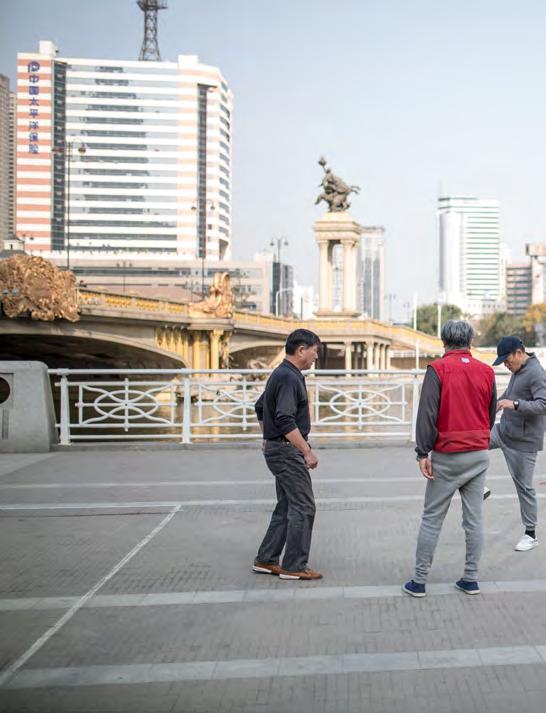
2 minute read
TIANJIN, CHINA
Tianjin in China was one of the first cities to join Cities Changing Diabetes in 2014. As part of the initial research, a vulnerability assessment was conducted, and this study revealed insights that allowed the programme partners to deploy evidence-based solutions to bend the curve. In Tianjin, efforts are needed to improve patient health literacy and education about diabetes for healthcare professionals (HCPs). To address these issues, Tianjin adopted an innovative and cooperative approach to fight urban diabetes. The focus is on three areas: integrating diabetes prevention and treatment into all policies and promoting co-construction and sharing; focusing on the grassroots level and innovating the mode of diabetes prevention and treatment; and promoting education and raising public awareness.
ONE-THIRD OF
ADULTS ARE OVERWEIGHT57
MEDICAL CARE AT GRASSROOTS LEVEL
As the primary health sector is the key point of diabetes prevention and treatment delivery, Tianjin has formulated a series of actions to strengthen healthcare management in local community health centres.
In an attempt to increase diabetes awareness and improve public health literacy, Tianjin set up the Four-in-One Training project, which integrates the comprehensive training contents of medical treatment, nursing, medication and management. Through this programme, HCPs from around 300 community health centres (CHCs) have received training in diabetes diagnosis and treatment skills as well as training in improved patient management. The training, which was conducted at 30 large hospitals, drew on the expertise of 70 specialists. The project not only trained chief diabetes doctors and diabetes nurses practising in CHCs, but also integrated educational resources, and delivered health knowledge to the community.
CONFIDENCE AND TRUST INCREASED
Through the project, diabetes prevention and treatment capacity at the primary level has been significantly improved. More than 200 diabetes clinics in community health centres have been established, and close to 500 chief diabetes doctors and diabetes nurses have been trained.
Approximately 447,000 people with diabetes were cared for in their communities, the standardised care rate reached 80% and the blood glucose control rate reached 73.5%. Furthermore, the clinical confidence of the doctors practising in CHCs increased, as did the level of patient trust.
Consequently, diabetes care in Tianjin is currently moving away from the original focus of ‘crowd coverage’ to ‘management quality and effect’. No longer an isolated medical service, diabetes care has evolved into providing comprehensive, holistic and continuous health management services.
Tianjin, China
IN TIANJIN 15.7%
OF CHILDREN AND ADOLESCENTS BETWEEN THE AGES OF SEVEN AND 18 ARE LIVING WITH OBESITY58
LOCAL PROGRAMME PARTNERS
Tianjin Municipal Health Commission
Tianjin Healthcare Security Bureau
Tianjin Medical Association
Tianjin Medical University











